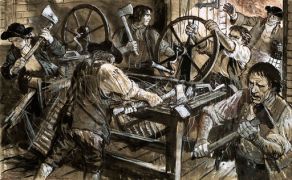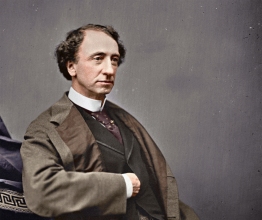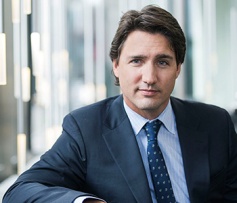President Trump didn’t send Navy SEALS to intentionally kill an 8-year-old girl. But they did. When the president spoke of the January 29th Yemen raid, he mentioned the death of an American soldier and suspected terrorists but not the girl. Presidents often shade the truth. We do too. For instance, we teach our kids that the First World War ended in 1918. It didn’t. Not really. Its latest battle was Trump’s raid. The little girl was the First World War’s latest casualty.
The First World War senselessly murdered a generation and brought about transformational changes. It led to women earning the right to vote. It enabled the birth of the first Communist state that ravaged its people, conquered its neighbours, exported revolution, and contributed to the Cold War proliferation of nuclear weapons. The manner in which the First World War was settled led to the century’s second global war by making Germans susceptible to the rantings of a narcissist lunatic who promised to make Germany great again.
But the First World War spurred more than just those changes that shaped the past. To see how it affects us today, we need to go back, way back.
From the 14th to 17th centuries, the Ottoman Empire grew to rule swaths of land in north Africa, the Greek peninsula, nearly all of what we now consider the middle east, and southeast Europe all the way to Vienna. It was the world’s most advanced civilization. The multi-cultural but predominantly Islamic empire made stunning progress in mathematics, chemistry, art, and business. It rescued antiquity’s ideas by saving its libraries. The empire’s power sputtered, however, when it failed to adjust to Europe’s industrial revolution. Then, in 1914, came the war.
Germany promised to respect the Ottoman empire’s borders and so an alliance was formed. In 1915, Britain said it would help preserve the holy city of Mecca if Egypt would attack the Ottoman Turks. A year later, French and British diplomats Mark Sykes and Francois Georges-Picot negotiated an agreement whereby their nations would help conquer and then split the Ottoman empire between them. British and empire troops were taken from the western front to attack. Rebel groups were funded and armed. More money and support flowed to the effort when Britain offered Zionists a Jewish homeland in what was then Palestine. The monarchy collapsed and the empire fell.
The Versailles victors’ conference rubber stamped the Sykes-Picot Agreement. While French, British, and American leaders spoke of people ruling themselves – self-determination – they ignored the principle when it suited their interests. They ignored it in the middle east. Nations, ethnicities, religious sects, and tribal groups within the sprawling, complex but now crushed Ottoman empire were ignored. The men in Paris simply drew arbitrary lines on a map. They invented countries from nothing, foisted leaders of their choosing upon them, and lumped competing groups within them. Syria was created. Lebanon was invented. So was Iraq and Iran and more. Meanwhile, national groups such as the Kurds were left state-less, split between what became three new countries.
The anger was immediate but protest was crushed. British and French, and later, American money protected the protectorates with blind eyes turned to whatever their chosen leaders chose to do to their people. The flowing oil enriched multinational corporations, western economies, and the tiny local, governing elites. People raged at the harsh, corrupt, secular, westernized governments. For decades, the rage burned underground.
Anger turned to action with an Iranian university philosophy professor. The Ayatollah Ruhollah Khomeini was exiled in 1964 for criticizing Iran’s puppet regime that was disparaging Islamic religious scholars opposed to the ongoing secularization and westernization. From Paris, Khomeini smuggled cassette tapes back to his homeland. They contained speeches explaining that the Ottoman empire had once been the most powerful in the world but God had turned His back on its people because they had rejected Him. Allah would renew power, happiness, and sovereignty, he said, if the region’s Islamic people again lived according to His wishes. Iran’s people must first adopt orthodox Muslim lifestyles. Then they could overthrow Iran’s leader, the Shah, and create an Islamic state where religious and temporal law were one. In 1979, it happened.
The new Iranian state did as Khomeini pledged and implemented Sharia law. A similar state arose from the carnage of the Soviet war in Afghanistan. Taliban leaders used different words but sought the same goals for the same reasons. But the other middle eastern states invented by the First World War remained propped up and powerful. More action was needed.
On August 11,1988, in Peshawar, Pakistan, the son of a Saudi millionaire, Osama Bin Laden, met with Saudi medical doctor Ayman Mohammed Rabie al-Zawahiri, and Egyptian political philosopher Sayyed Imam Al-Sharif, who is often called Dr. Fadl. They agreed that Khomeini’s vision and goal were correct. They established a new organization and plotted new tactics to pursue it. They would poke the west. They would poke it again and again until it finally reacted by attacking the middle east. Those attacks would bring the long simmering, underground rage to the streets. The pan-Arab idea would win by not losing. That is, the west would be defeated by wearing it down, as happened with the Soviets in Afghanistan and the Americans in Vietnam. The corrupt, secular middle eastern governments would then be replaced by leaders professing Sharia law. The old empire would return. It would be like the First World War had never happened. They called their new organization Al-Qaeda.
The poking began with two westerners killed at Aden’s Gold Mihor hotel in 1992. Two months later, Al-Qaeda operatives detonated a 500kg bomb at New York’s World Trade Centre. Americans screamed but did nothing. It would take more. In August 1998, American embassies in Kenya and Tanzania were simultaneously attacked and 223 were killed. The Americans blew up some Al-Qaeda bases. It wasn’t enough. USS Cole was rammed and sailors were killed. The Americans blew up a few empty tents in the desert. It still wasn’t enough. In September 2001, Al-Qaeda high jackers turned planes into weapons and flew them into the World Trade Centre, the Pentagon, and a fourth plane, on its way to Washington, crashed into a Pennsylvania field. That was enough.
The Americans finally did what Bin Laden and his partners had been hoping all along and attacked Afghanistan and then Iraq. It was perfect. The Americans and their allies brought western armies to Muslim countries and killed Muslims. They desecrated the holy city of Mecca by flying missions from Saudi Arabia. Just as Bin Laden had hoped, the Americans and the west were now, more than ever, the devil to be rejected along with their devilish western ways.
It took longer than the First World War itself but eventually, the Taliban was crushed, Al-Qaeda was broken, and Bin Laden was killed. But Al-Qaeda morphed into a hundred smaller organizations and pockets of resistance without a headquarters to bomb or an army to defeat.
The Islamic State of Iraq and Syria (ISIS) became the most powerful of the angry lot. Its stated goal was familiar: to create a caliphate, one state comprising nearly all of the middle east, and united under Sharia law. In June 2014, ISIS bulldozers flattened desert berms that had demarked the Syrian-Iraqi border. ISIS leaders said they were erasing the line created by the First World War’s Sykes-Picot Agreement and Treaty of Versailles. Every western pledge to defeat ISIS was another promise to keep the old, imperial, unprincipled and artificial First World War borders in place.
Historians say the First World War resulted in the deaths of 7 million civilians and 11 million soldiers. They are wrong. Mr. Trump’s botched Yemen raid on an Al-Qaeda-held village killed an American Navy SEAL, 14 suspected militants, and 10 women and children. One of the children was an 8-year-old girl, an American citizen, born in the United States. Her name was Nawar al-Awlaki. She was shot in the neck.

Nawar al-Awlaki (Photo: Middle East Monitor)
We should add her and the others to the First World War’s staggering statistics for the lives that ended last week are the latest casualties in a war that has yet to end.
If you enjoyed this column, please send it to someone and consider checking out others at http://www.johnboyko.com or even checking out my books that are available at Chapters, Amazon, and bookstores everywhere.





















